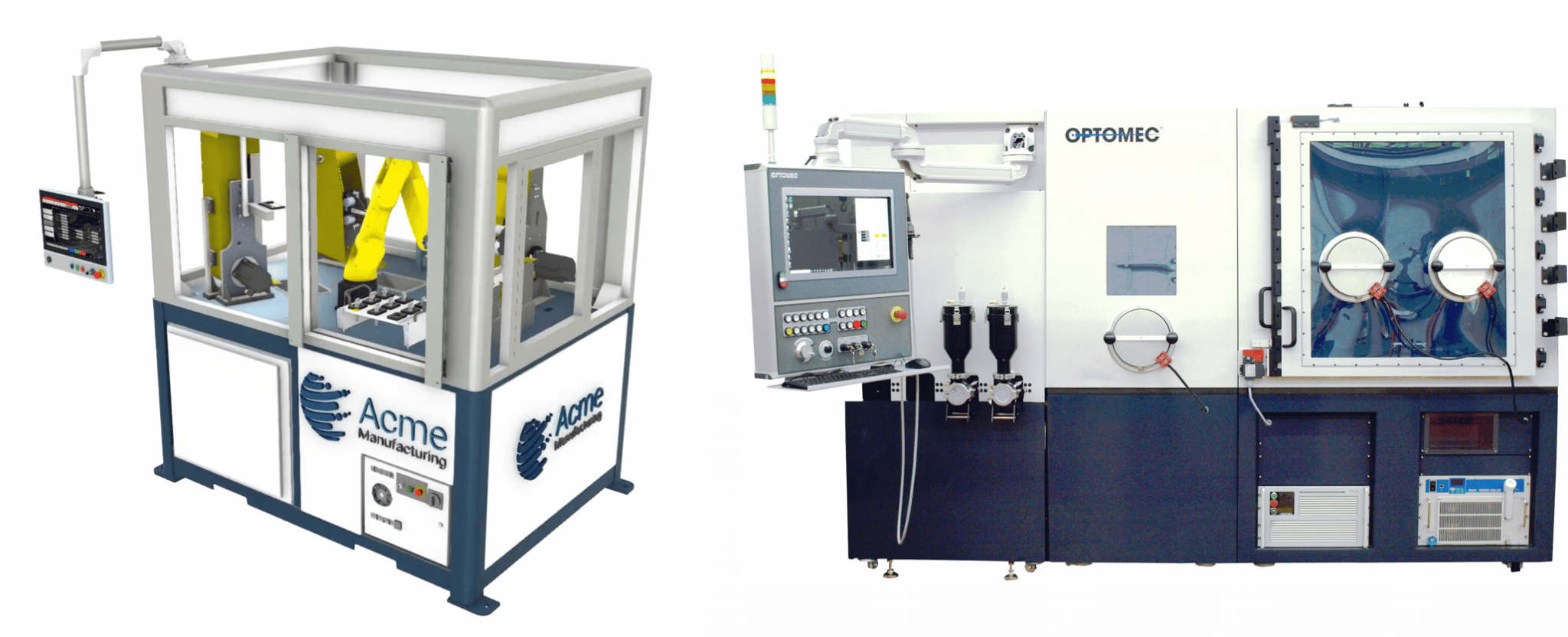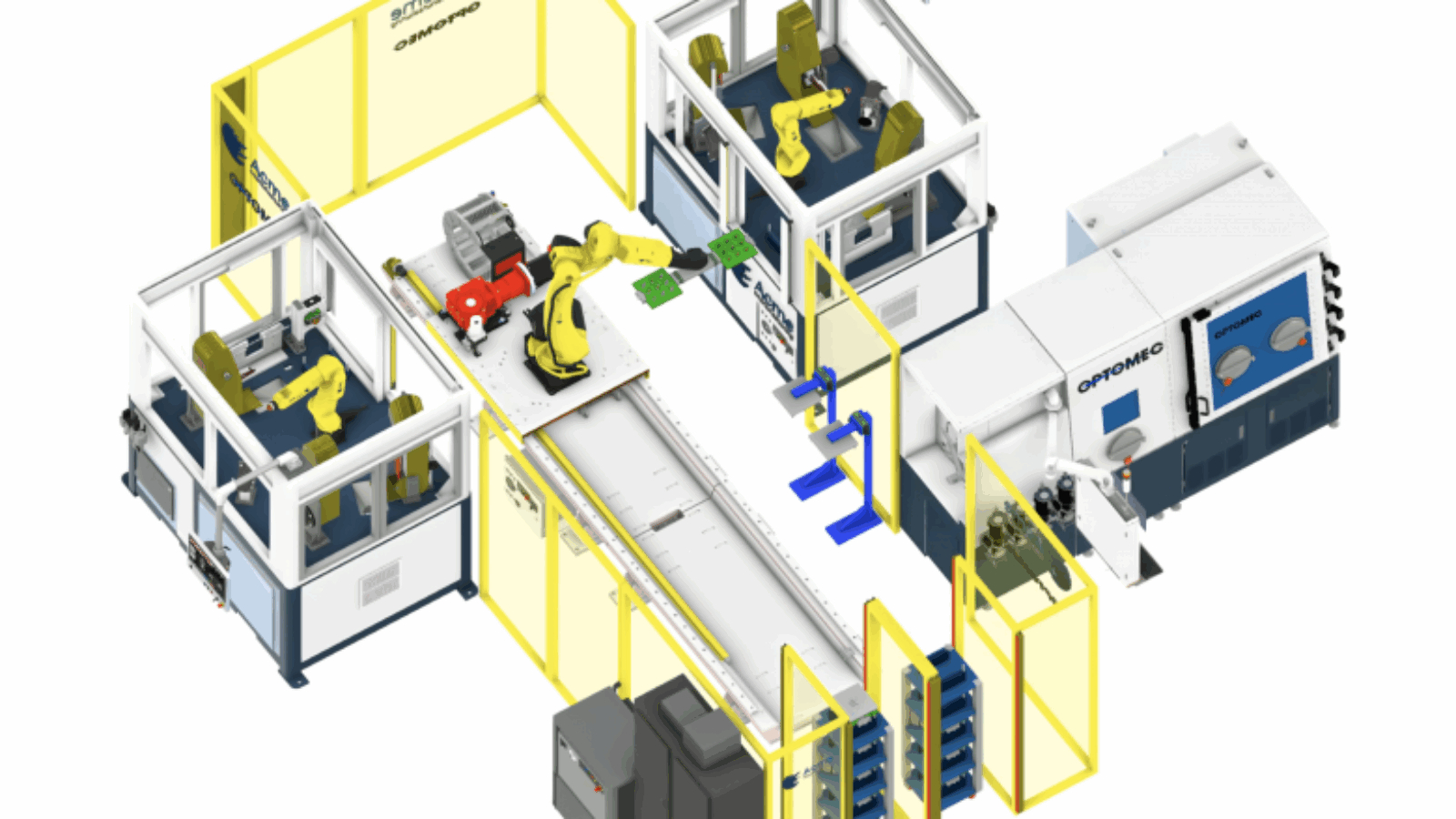Optomec Inc., a leader in metal additive manufacturing solutions, and Acme Manufacturing, a global leader in robotic material removal systems, are set to showcase an industry-first, fully automated work cell, initially optimized for repairing aviation compressor blades made of titanium. The turnkey work cell is the product of a two-year collaboration between the companies working with input from commercial maintenance repair and overhaul (MRO) and US DoD repair centers for aircraft engines.
The automated work cell has a repair capacity of 85,000 titanium compressor blades per year and provides a compelling ROI when compared to traditional CNC machines and manual TIG welding. Technologies used in the automated work cell are currently commercially available and have been certified by civil aviation authorities around the world.
The entry-level work cell consists of three stations that enable blade tip grinding, 3D additive laser cladding, and post-clad finishing. The cell also includes an automated pallet load/unload station, a unique pallet flipping station, and a robotic material handling system. Each machine in the work cell is capable of automatically adjusting tool paths to accommodate blade-to-blade variations resulting from normal wear and distortion during service.
Manufacturing on Demand

The Optomec CS-250 5-axis laser cladding machine will be used to produce high quality, high yield precision welds for titanium compressor blades utilizing proprietary LENS Directed Energy Deposition (DED) and AutoCLAD advanced vision and adaptive tool-pathing technology in a controlled argon atmosphere. The Acme Manufacturing MRO blade tip repair machines can be configured for blade tip grinding, weld blending, and polishing. The system is equipped with the first-of-its-kind auto path generation, that allows for a high mix, low volume environment. This new technology is 3X to 4X faster than traditional CNC machines.
Working in tandem, the systems in the work cell provide a productive real-world implementation of Industry 4.0 and digital thread concepts.
“Our collaboration with Acme Manufacturing has brought together complementary technologies that provide a compelling business case for customers. Demanding repair requirements, driven by commercial and DoD repair centers, has led Optomec to enhance our DED capabilities to enable high volume, high yield repair for compressor blades, an especially challenging objective for titanium parts,” said Jamie Hanson, VP of Business Development at Optomec.
“Acme has delivered over 200 robotic material removal systems to the aerospace industry in the past 35 years largely for new part manufacturing. By utilizing efficient and repeatable robotic finishing technology, we will be able to enable MRO engine repair centers to improve overall component quality and help lower unit costs. I am excited about our teams’ developments in auto path generation, which allows us to enter a new market of automated material removal systems,” said G.A. “Fritz” Carlson III, President and CEO of Acme Manufacturing.
You might also like:
DBZ launches AION NX large format hybrid 3D printer: Resulting in cost savings of 80% for polymer 3D printing (as the machine uses direct pallet extrusion 3D printing) and delivering CNC machined parts with 70% reduced cycle time.
* This article is reprinted from 3D Printing Media Network. If you are involved in infringement, please contact us to delete it.
Author: Edward Wakefield


Leave A Comment